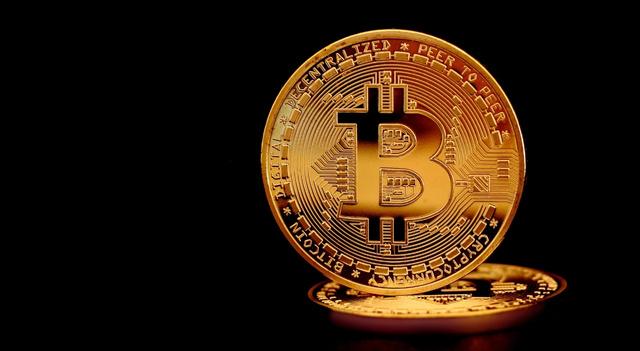
On October 14, US Bitcoin ETFs received $555.9 million, the largest daily inflow since June. The Fidelity Wise Bitcoin Origin Fund (AMEX:FBTC) led with $239.3 million, followed by Bitwise (AMEX:BITB) with just over $100 million, and BlackRock’s iShares Bitcoin Trust (NASDAQ:IBIT) with $79.6 million. Bitcoin ETFs have seen nearly $20 billion in inflows over the past 10 months, while gold ETFs recorded only $1.4 billion during the same period.
Canary Capital Group, recently founded by Steven McClurg, is aiming to lead the crypto ETF sector. After filing for an XRP (COIN:USDCUSD) ETF, the firm submitted a new request for the Canary Litecoin ETF, the first fund linked to Litecoin (COIN:USDCUSD). The registration process doesn’t yet include details about the management fee or ticker. Litecoin rose after the announcement, reaching a daily high of $71.94, currently trading at $68.71.
PancakeSwap (COIN:USDCUSD) launched PancakeSwapX, a new product enabling fee-free transfers and gasless swaps on Ethereum and Arbitrum networks. This innovation simplifies DeFi trading by removing the need for gas tokens like Ether (COIN:USDCUSD). According to Chef Kids, the leader of PancakeSwap, PancakeSwapX reduces complexity for new users and improves execution prices, driving broader DeFi adoption without relying on centralized platforms. This could boost decentralized finance growth.
Bitcoin (COIN:USDCUSD) reached $67,944.76 for the first time in two months but quickly pulled back, currently trading at $66,904. Volatility returned due to market and political factors in the US, with resistance at $68,000. The rally brought Bitcoin closer to the psychological level of $70,000.
According to Chris Newhouse from Cumberland Labs, a combination of short squeezes and speculation pushed the price higher, while the Fear and Greed Index indicated 2024 as the most greedy year. Increased interest in futures also reflected greater institutional exposure, resembling price movements from last October. Although retail demand remained low, a 3% increase in new investor purchases and growing open interest suggests optimism despite upcoming volatility.
While Bitcoin is attracting optimistic predictions, traders are more cautious about Ether. According to Derive, the volume of sold calls on Ether is 2.5 times higher than bought calls, signaling skepticism about ETH’s (COIN:USDCUSD) upside potential. This divergence between the two cryptos will be crucial as the US election approaches, with significant bets on Bitcoin at levels of $75,000 and $100,000.
Standard Chartered projects Bitcoin (COIN:USDCUSD) could surpass $73,000 by November, driven by strong ETF inflows and rising call options. Geoffrey Kendrick, head of digital assets at StanChart, highlights that traders are positioning for a possible rally, with significant interest in $80,000 call options. The US presidential election may also benefit Bitcoin, particularly with a potential Trump victory, which could result in more favorable regulations for digital assets.
dYdX (COIN:USDCUSD) launched the Trump Prediction Market Perpetuals, allowing traders to leverage positions on Donald Trump’s chances of winning the 2024 election. After community approval, the decentralized market enables non-custodial trading with perpetual contracts that can be held indefinitely. Traders can adjust positions using leverage and advanced orders like stop-loss and take-profit to mitigate risks in a volatile political environment.
According to a report by Coinbase and Glassnode, the cryptocurrency market matured significantly in 2024, with billions of dollars flowing into spot cryptocurrency ETFs and an increase in transaction volumes across blockchain networks. Stablecoins and Layer 2 solutions fueled this growth, while Bitcoin volatility dropped to under 60%. The adoption of stablecoins and Ethereum’s expansion reflected the growing crypto economy.
The Sui Foundation denied insider trading allegations following the sale of $400 million in SUI tokens (COIN:USDCUSD). Community members, including Kyle Samani, raised concerns. On October 14, the foundation stated that no insider violated lock-up agreements, and the token release schedule remains intact.
Ripple revealed partnerships with exchanges like Uphold, Bitstamp, and Bitso to distribute its new stablecoin, Ripple USD (RLUSD). Brad Garlinghouse, Ripple’s CEO, highlighted that RLUSD will be used in financial cases like payments and asset tokenization, in addition to facilitating international transactions. Issued under strict regulatory oversight, the stablecoin will be backed by dollar reserves and undergo third-party audits to ensure transparency and compliance. Ripple aims to establish RLUSD as the standard for enterprise stablecoins.
Paxos launched a new stablecoin payment platform, targeting payment service providers and fintechs to accelerate global transactions. Stripe, a payments processing giant, was the first to adopt this infrastructure, allowing users to accept stablecoin payments converted into fiat currencies. The platform, supporting USDP (COIN:USDCUSD), PYUSD (COIN:USDCUSD), and USDC (COIN:USDCUSD), promises to reduce costs and improve global payment efficiency, initially operating in the US with plans for expansion.
Scammers created a fake Unichain website, Uniswap’s Layer 2 network, promoted through Google ads. The site tricked users into connecting their Web3 wallets and attempted to steal cryptocurrencies. Although quickly taken down, the scam highlighted the risks of clicking on sponsored ads and the importance of inspecting transactions. Uniswap Labs announced the Unichain testnet, with the mainnet expected by the end of the year.
Blockstream secured $210 million in funding through a convertible note round led by Fulgur Ventures. The capital will be used to expand Bitcoin infrastructure projects such as the Liquid Network, mining operations, and financial products. The Liquid Network has already issued over $1.8 billion in assets, including stablecoins and tokenized bonds, strengthening the company’s presence in Layer 2 solutions and faster transactions.

It looks like you are not logged in. Click the button below to log in and keep track of your recent history.